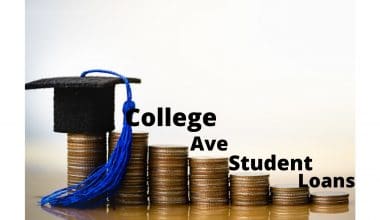As higher education costs continue to rise, many students are looking for alternatives to traditional four-year colleges.
Trade schools can provide the skills and training needed for a successful career in several high-demand fields, but they come at a cost.
For students who need financial assistance to attend a trade school, there are several options available.
Federal student loans are an obvious choice, but private lenders offer loans specifically for trade school students.
Trade school loans typically have lower interest rates than other student loans, and many lenders offer flexible repayment options that make repaying your loan easier.
If you’re considering attending trade school, research your financial aid options to make the best decision for your future.
This article provides detailed information about Student loans for trade schools and how to get one. Carefully read through!
Table of Contents
- What Exactly are Trade schools?
- How do Trade Schools and Colleges Differ from One Another?
- How can I Finance My Trade School Program?
- Student Loans to Attend a Trade School?
- How Do I Choose The Best Trade School?
- What if I’m not approved for a student loan for trade school?
- How to Apply for Loans for Trade School
- Conclusion
- Recommendations
What Exactly are Trade schools?
Trade schools, also known as a career, technical, or vocational schools, are specialized educational settings that give students the knowledge, abilities, and practical experience required to work in a particular “trade” or occupation immediately after graduation.
These are typically labor-intensive manual professions, including cosmetology, plumbing, welding, construction, and vehicle repair. Most trade schools require a high school diploma or GED to enroll.
Read Also: 15 Best Trade Schools in MA (Massachusetts) in 2024
How do Trade Schools and Colleges Differ from One Another?
Despite being a type of higher education, trade schools differ from universities in several areas, including the courses they provide and the certificates alums get.
Time to graduate
Generally, a college student must complete an associate degree within two years and a bachelor’s degree within four years.
A student can achieve their study and graduate from many trade schools in two years, if not even less.
Coursework
While college students may select a major and a minor, they will probably need to finish general coursework to graduate.
For instance, before starting their major-specific courses, English majors must take math and science courses.
Someone particularly tailored the education in trade or vocational schools to the student’s chosen program. For instance, you will only need HVAC after taking irrelevant science or math classes.
Learning environment
Lecture halls or labs are where college students spend most of their class time. Tech and trade school students receive hands-on education in workshops or labs.
Costs
According to the Center for Employment Training, the average cost to receive a bachelor’s degree is $132,000, whereas the average cost to earn a degree from a trade school is $33,000.
Credential attained
While trade schools may only offer diplomas or certificates, colleges may offer a variety of certifications, degrees, and credentials.
Read Also; 15 Best Trade Schools in Las Vegas in 2024 | Best US Trade School
Job market
Although trade schools and colleges work to provide the groundwork for your future profession, it’s crucial to keep in mind that every graduate will encounter different difficulties in the job market.
Trade schools work to prepare students to land a specific career or apprenticeship as soon as they graduate.
While certain firms may have higher requirements for experience or education, colleges also try to prepare students for employment in their chosen industry.
How can I Finance My Trade School Program?
Even though trade school may be less expensive than college, some students still struggle to cover the out-of-pocket fees. For your selected program to be completed, you might require financial aid.
Fortunately, trade school students have access to many of the same financial aid choices as college students, such as:
1. Loans
You can apply for federal and private student loans for trade school. But trade school students are subject to several exceptions.
2. Scholarships
Some financial aid is available to students attending trade schools. In addition, trade schools like the Motorcycle Mechanics Institute provide financial assistance to enrolled students.
Several charitable organizations and technical groups also offer scholarships for students attending technical or career schools.
Read Also: 13 Best Accredited Trade Schools in Ohio, USA | Ranking 2024
3. Grants
Students who meet the requirements can also apply for grants from organizations like the Native Hawaiian Vocational Education Program, the Perkins State Basic Grants, and America’s Career Resource Network.
Student Loans to Attend a Trade School?
You should take out a student loan if you need more than your funds, scholarships, and grants to pay for trade school.
Although getting a student loan is straightforward, knowing all your loan possibilities is crucial before choosing one.
Federal and private student loans are the two options available to borrowers who are students and their parents.
Federal student loans are always an excellent place to start since they provide advantages that private loans do not, like access to student loan forgiveness programs and income-driven repayment plans.
However, the amount you borrow with federal loans is capped yearly, so you might need more to pay for your expenses.
Let’s talk about these loans elaborately!
Federal loans for students attending trade schools
Students who decide to continue their education in a career or trade school are eligible for federal student funding.
Even though not all trade schools qualify for federal funding, completing the Free Application for Federal Student Aid (FAFSA) is vital to be fully informed of your federal student loan possibilities.
Types of Federal Loans
Direct Subsidized Loans and Unsubsidized Direct Loans are the two primary federal student loans for which you may be eligible.
Direct Subsidized Loans:
As long as you complete the enrollment requirements, the government pays the interest on these loans while you’re in school because they are subsidized.
The interest on your loans will be your responsibility whenever you graduate, stop attending school, or lose your eligibility.
Direct Unsubsidized Loans:
Because the government does not cover the interest on these loans, you are responsible for paying it as soon as the loan funds are disbursed.
Most federal student loans do not require a credit check, making them generally easier to qualify than private loans.
Although income-driven repayment programs might lengthen your repayment duration, all new federal student loans have set interest rates and a standard 10-year repayment term.
Private Loans for students attending vocational schools
Few private companies offer loans just for people attending trade schools. However, private loans allow you to spend money on things like career training, technical colleges, and trade schools.
Private financial entities such as banks, credit unions, and online lenders offer student loans. Mostly, you’ll need to gain the loan with either your strong credit, a cosigner with good credit, or both.
You’ll be obliged to pay the loan while you’re still in school, and rates can be fixed or variable.
Your credit score, income, and length of payback are just a few examples of the variables that will affect the interest rate you pay.
Read ALSO; Best Trade Schools in Chicago
College Ave
Student loans from College Ave come with low-interest rates and flexible repayment schedules. You might use the lender’s job training loan to pay for trade school.
Their loan amount ranges from $1,000 to 100% of your certified attendance costs, ranging from 5, 8, 10, or 15 years. Note that the grace period is six months, and the rates (APR) range from 3.37% – 15.82%.
You (or your cosigner) must have a valid Social Security number and satisfy College Ave’s only credit score requirements to qualify for a professional and trade school loan.
Sallie Mae
Perhaps the most well-known student lender is Sallie Mae. It provides a Smart Option Student Loan for Career Training for trade schools and other professional training programs.
Their loan amount ranges from $1,000 to 100% of your certified attendance costs, ranging from 5 to 15 years. Note that the grace period is six months, and the rates (APR) range from 2.00% to 14.08%.
This option’s intriguing feature is that you can borrow whether they’re enrolled full-time, part-time, or occasionally. This loan for trade school can pay for your school-related tools, equipment, and other trade-related items besides your tuition, fees, and books.
To qualify for a Sallie Mae Student Loan for Career Training, you must apply and satisfy the specific income and credit score requirements. You must possess a current Social Security number.
Ascent
For students enrolled in undergraduate, graduate, professional, and career programs, Ascent is a private student lender that provides cosigned and non-cosigned loans.
Students enrolled in approved certification or professional trade programs at approved institutions may apply for a fixed-rate Career Training and Development Loan from the company.
Their loan amount ranges from $2,000 to 100% of your school-certified attendance costs, with 5, 7, or 10 years to repay.
You must be 18 years old and a DACA student, permanent resident, or U.S. resident to apply for this loan. You must not have a history of defaulting on student loans and must fulfill Ascent’s credit requirements or add a cosigner with good credit.
How Do I Choose The Best Trade School?
Choosing a college to apply to is similar to choosing the best trade school for you. However, most career, vocational, and trade schools are private institutions.
Therefore, it’s crucial to thoroughly investigate each to evaluate its reputation, fees, and how it will pave the career path. To select the ideal trade school for you, follow these steps:
Verify the institution’s accreditation.
Check the institution’s accreditation by searching for it in the Database of Accredited Postsecondary Institutions and Programs. Check the school’s accreditation history and see if any programs require additional certification.
Verify the school’s federal aid eligibility.
Once you have confirmed the institution’s accreditation history, you should verify whether the school qualifies for federal financial help.
Remember that a school must be accredited by an independent agency recognized by the U.S. Department of Education if it offers federal financial assistance.
You should check the school’s website to see whether it provides any other scholarships, grants, or financial assistance in addition to confirming the school’s eligibility for federal aid.
Examine the price of attendance at various institutions
Consider all expenses besides tuition and books as you compare prices. Consider living expenses, for instance, if you relocate to another city for School A or B.
Examine the school’s reputation and rates of job placement
No university or trade school can promise a job. However, many will proudly mention their track record of placing graduates. Examine these success rates to determine the likelihood that you’ll land an appointment as soon as your program is over.
What Career Can I Pursue With Trade School Certificate?
You can pursue different careers with a technical or trade school certification. Some of the typical jobs include:
- IT professional
- a dental assistant HVAC specialist
- Practical nurse license
- web programmer
- Electrician
- construction inspector
- Plumber
Read ALSO: 15 Best Trade Schools in Florida
What if I’m not approved for a student loan for trade school?
There are other options if you can’t get a student loan for trade school.
Student loans might only sometimes be an option, either because you’ve been turned down for a loan or because your school isn’t allowed to accept federal funding.
Other ways to finance your trade school program include:
Income-sharing contracts
Some universities have recently started to accept income-share agreements in place of student loans.
Some schools or private lenders will give students the money they need for their education upfront rather than requiring them to borrow money and then pay it back with interest.
In exchange, the student consents to give the school or lender a portion of their future earnings once they start working.
The idea of income sharing is still relatively new. Although the number is increasing, only a few colleges participate. If it’s an option for you, ask your prospective school.
Scholarships and grants
Students attending trade schools can apply for federal grants and scholarships.
Grants and scholarships for trade schools don’t require repayment, so they essentially give eligible students free money.
Each trade school typically has its scholarships and grants available to students.
A few other state-based and third-party programs are also available. Most of these programs are only available to specific student populations, like children of military personnel or adults making a career change.
How to Apply for Loans for Trade School
You should take a few crucial measures to apply for a student loan for a trade school.
Complete the FAFSA.
With the FAFSA or Free Application for Federal Student Aid, you should begin your search for financial aid for school costs.
This form accounts for your educational costs and family size, and income.
They calculate your financial need and eligibility for specific grants and federal loans using this information.
Read Also: 15 Best Trade Schools in Michigan
Accept the available federal subsidies.
Fixed interest rates on federal student loans are frequently less expensive than those offered by private lenders.
They are the finest first choice for financing trade schools because they also have advantages and features that private loans lack.
To address the gaps, think about using private student loans.
You might need to turn to private loans if you need more than your federal loans, grants, and scholarships to pay for your educational costs. These loans require a creditworthy principal borrower or cosigner and may have variable or fixed interest rates.
Search for a cosigner and compare terms
Before deciding on a private loan, compare rates and terms to ensure you get the best deal. A cosigner with good credit can help you get more loans or reduce interest rates.
Conclusion
Student loans for trade schools can be an excellent investment. You can get a well-paying job in a high-demand field with the proper training. You can also use your skills to start your own business. (https://norvado.com/) If you’re considering going to trade school, don’t let the cost deter you. There are many options for financing your education.
Read Also: 13 Best Electrician Trade schools in the World.
FAQs
Trade school is a specialized educational setting that gives students the knowledge, abilities, and practical experience required to work in a particular “trade” or occupation immediately after graduation.
Trade school is also called career, technical, or vocational school.
The average cost to complete a two-year trade school program is estimated at just $33,000, while colleges and universities can set you back more than $100,000.
Reference
- Sparrowfi.com- What is trade school is it free
- Supermoney.com- Trade-school loans/
- Foxbusiness.com– Student trade school Loan
- Credible.com– Trade school loans
- Lendedu.com- Student loans for trade school
Recommendations
- 13 Best Electrician Trade schools in the World
- 15 Best Trade Schools in Michigan
- 15 Best Trade Schools in Florida
- Best Trade Schools in Chicago
- 15 Best Trade Schools in MA (Massachusetts) in 2024
- 15 Best Trade Schools in Las Vegas in 2024 | Best US Trade School
- 13 Best Accredited Trade Schools in Ohio, USA | Ranking 2024
- 10 Best Trade Schools in California | 2024
- 13 Best Mechanical Trade Schools and Programs in 2024





